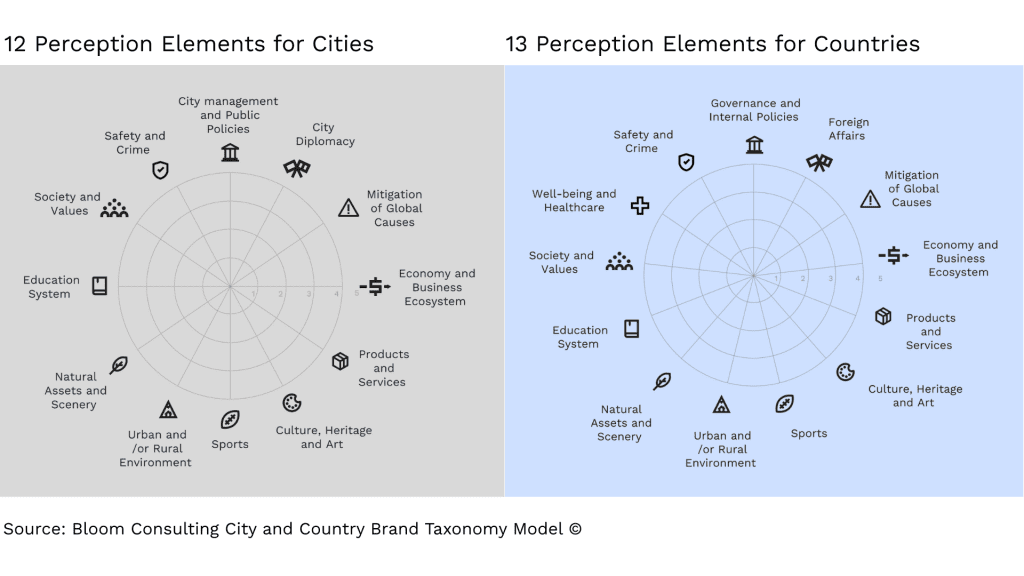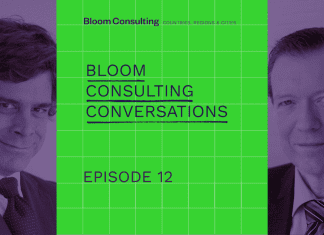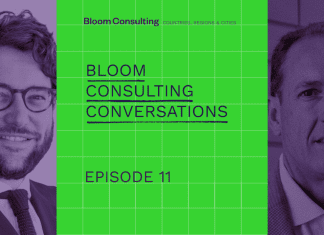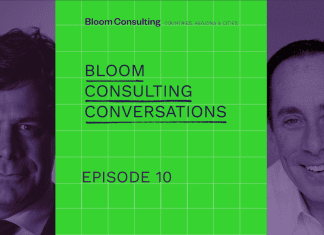This article builds on the paper “Artificial Intelligence” by Filipe Roquette, which explores how AI is redefining the way territories are managed, promoted, and understood. In this article Filipe takes e a closer look at how AI-powered tools, from real-time reputation management to predictive analytics, can reshape how Nations and Cities build, manage, and protect their brands in an ever-changing world.
If you would like to dive deeper into the full analysis and examples, you can read the complete paper by Filipe Roquette in the Elgar Encyclopedia of City and Place Branding.
Branding ≠ Marketing
Bloom Consulting distinguishes between branding and marketing:
- Place Branding → Perception = Influence + Experience
- Place Marketing → Demand = Promotion
AI’s most powerful role lies in branding, not marketing. It enables territories to measure perceptions in real time, anticipate shifts in reputation, and co-create narratives with stakeholders. While marketing remains about stimulating demand through promotion, branding is about shaping how people think and feel about a place, and here AI provides unprecedented tools.
How AI Transforms Place Branding
1. Real-time Perception Analysis
AI can process vast datasets from social media, reviews, and global news, providing live insights into how a territory is perceived. This complements Bloom Consulting’s Digital Identity concept, allowing governments and agencies to measure how influence (indirect exposure) and experience (firsthand interactions) evolve daily.
Refresh cycles:
- Daily/weekly: Social listening, digital identity tracking.
- Quarterly: Benchmark campaigns vs. perception changes.
- Annually: Surveys, rankings, and longitudinal analysis.
2. Predictive Modeling of Trends
Instead of reacting to shifts, AI can anticipate them. Predictive models help forecast tourism flows, investment trends, and emerging audience segments. Bloom Consulting’s Nation Brand Taxonomy Model © provides a structured framework that organizes a country or territory’s brand into clear dimensions such as tourism, trade, investment, talent, and diplomacy, making it easier to align AI-driven insights with long-term strategic priorities. Combined with this model, AI ensures that strategies are both forward-looking and grounded in structured brand dimensions.

3. Hyper-segmentation and Adaptive Campaigns
Traditional segmentation focused on demographics; AI enables micro-audiences based on behaviors and passions (e.g., “urban art enthusiasts who surf”). Campaigns can then adapt in real time, strengthening emotional connection and ensuring branding efforts align with shifting perceptions.
4. Stakeholder Engagement at Scale
Opportunities and Risks
AI opens doors for personalized promotion, immersive experiences (via AR/VR), and enhanced territorial management. However, risks remain:
- Data bias and hallucinations: Flawed training sets can distort perception.
- Cultural homogenization: Over-optimizing for global appeal risks erasing local identity.
- Ethical responsibility: Who is accountable for AI-driven decisions in branding campaigns?
Future of Place Branding
AI is not just another tool – it redefines the very methodologies of Place Branding. By integrating Bloom Consulting’s frameworks with AI capabilities, territories can manage perceptions with more accuracy, adapt strategies dynamically, and engage audiences meaningfully. The future of Place Branding will be defined by how well we combine data-driven intelligence with human authenticity. Territories that succeed will not only strengthen their brand but also build sustainable reputations that reflect both global relevance and local identity.
Cite article: Bloom Consulting (2025): Artificial Intelligence and the Future of Place Branding. Bloom Consulting Journal, 27 November. Available at: https://www.bloom-consulting.com/journal/ai-in-place-branding








